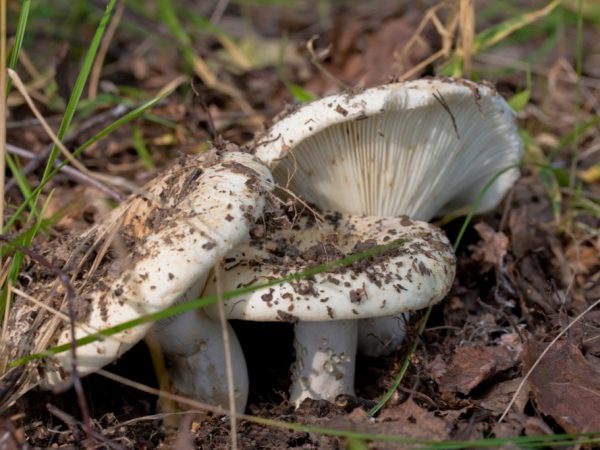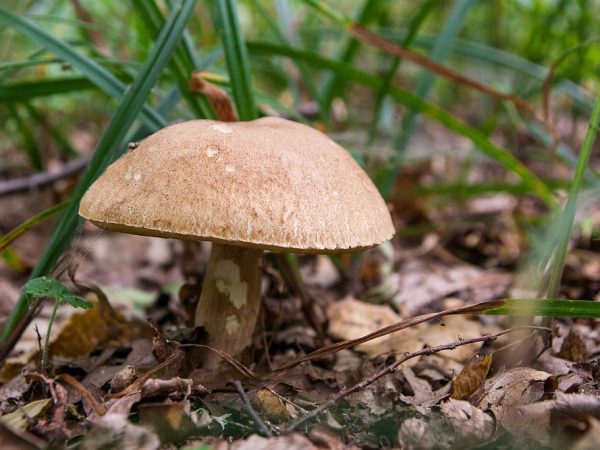Similarities and differences between mushrooms and plants
It is not by chance that mushrooms are united into a separate kingdom. The similarity of fungi and plants previously allowed the former to be attributed to the class of lower plants. However, after a detailed study of their structure and functions, scientists came to the conclusion that these representatives of the living nature of our planet should be distinguished into a separate group. This is due to the fact that in some ways they are similar to plants, and in something - to animals.

Similarities and differences between mushrooms and plants
Similarities
The representatives of these two kingdoms have similar features of the way of feeding. They lack a digestive system, all trace elements are absorbed at the cellular level. Representatives of the animal world digest food with the help of the digestive system. But for the simplest, only the digestive vacuole is characteristic. What unites these kingdoms is the possibility of unlimited growth throughout life, as well as the inability to move. In the animal kingdom, immobile corals are an exception.
The main similarity between representatives of the mushroom kingdom and the plant world is manifested in the methods of reproduction. Some organisms from both classes reproduce sexually, some asexually, others vegetatively. In addition to the similarities, there are also differences. During reproduction, some representatives of the plant kingdom form seeds with a multicellular structure. Representatives of the fungal kingdom form unicellular spores. Herbaceous ferns also reproduce by spores.
There is also a difference in the vegetative mode of reproduction. It consists in the fact that representatives of the plant world reproduce by dividing the root (division), the formation of specific shoots (whiskers) or leaves that have the ability to take root in a humid environment. Vegetative propagation of fungi occurs due to the presence of mycelium or sclerotia.
Representatives of both kingdoms are found in the aquatic environment and on land. Some species of fungi have adapted to life in places where oxygen does not enter, which makes them different from the representatives of the plant world.
In general, in a nutshell, the similarities between plants and fungi are as follows:
- unlimited growth;
- reproduction by spores;
- the presence of a cell wall and vacuoles;
- attached lifestyle;
- absorptive way of eating, etc.
Differences
Plants, like mushrooms, have a reserve of carbohydrates - this is starch, and in representatives of the fungal kingdom it is glycogen. In the structure of the cells of the latter, there are no plastids, which are found in cells of plant origin, which does not allow them to generate energy in the process of photosynthesis.
Considering the comparative characteristics, one cannot fail to note the differences in the method of extracting nutrients. The plant world is characterized by the process of photosynthesis, as a result of which organic substances are reproduced from inorganic ones. It proceeds in several stages, as a result of which glucose is first formed, which is "sent" to the places of accumulation and there it "turns" into insoluble starch grains. Mushrooms are not able to do this.They feed on ready-made organic matter and belong to heterotrophs, which, in turn, can be divided into a number of groups according to nutritional characteristics. Among them there are saprotrophs, which use the remains of dead animals and flora as nutrients. Caprophages secrete nutrients from excrement. There are varieties that settle on the host's body (tree and its roots), forming a kind of union. More often, as a result of a long union of wood and fungi, the host's body gradually dies. There are also mutually beneficial alliances, one of the striking examples of which is the interaction of fungi and unicellular algae during the formation of the lichen body. Receiving organic substances from the algae, the mycelium gives them in return an aqueous solution, including mineral salts.
Irina Selyutina (Biologist):
In the scientific literature, they are distinguished on the basis of a variety of data so-called. ecological groups of fungi (macromycetes) in relation to the food source:
- mycorrhiza formers (symbiotrophic macromycetes) form mycorrhiza, or fungus root of 3 types on the roots of trees and shrubs;
- saprotrophs: feed on dead organic matter, due to which all processes of their vital activity take place;
- litter and humus saprotrophs: decaying organic matter of forest litter, litter or humus layer of the soil is used for nutrition;
- xylotrophs: lead to decomposition of wood, they are also called wood-destroying;
- carbotrophs: confined to fireplaces and fires with a large amount of carbon in the soil;
- coprotrophs: settle and receive nutrients from animal excrement;
- bryotrophs: feed on decaying moss debris;
- mycotrophs: found shelter and food on the mummified fruiting bodies of cap mushrooms, they are also called saprotrophic mycophiles;
- parasitic fungi: settle on (in) the body of other living organisms and live entirely at their expense, ultimately leading to the death of the host;
- mycoparasites: parasites on other types of fungi;
- Predatory fungi: capable of hunting microscopically small nematodes.
Both mushrooms and plants are poisonous. Their poisons are not similar to each other in chemical composition. To end the comparison is worth the fact that these species have different metabolic products. In representatives of the plant kingdom, they are represented by asparagine and glutamine, and in fungi - by urea.
An interesting fact is that a dead mushroom becomes a food source for representatives of the plant kingdom and vice versa.
The main differences between mushrooms and plants are as follows (they also make mushrooms related to animals):
- heterotrophic nutrition;
- reserve nutrient - glycogen;
- the presence of chitin in the cell wall;
- metabolic product - urea;
- lack of plastids, etc.
Specific signs

Mushrooms have their own specific characteristics
The mushroom is not a plant or an animal, which is clear from a comparison of the various features of these kingdoms. However, representatives of the mushroom class have characteristics that are unique to them. The main difference is that fungi have a specific cell structure:
- Hyphae: individual "filaments" that grow at their apex and form the vegetative body of the fungus. According to the structure of the body, mushrooms are divided into higher (cellular mycelium) and lower (non-cellular mycelium). By body size into macro- and micromycetes.
- Pseudomycelium: formed when a single-celled vegetative body begins to bud, all daughter cells remain together, but each of them is an independent organism.
- Lack of tissue: fungi are characterized by the presence of plectenchyma - false tissue from which the fruiting body is formed.
- Type of food: hemoheterotrophic, which gave rise to a number of ecological groups of fungi in relation to the food source.
- The feeding process can be carried out in 2 ways: osmotrophically (pinocytosis - absorption of liquid food) and phagotrophic (phagocytosis - absorption of solid particles).
- The presence of spore-forming tissue (hymenium) and its location (hymenophore).
These are the main specific features of the mushroom kingdom. The general description gives a more extensive list.
The role of mushrooms in nature
The role of mushrooms that have been growing on Earth for more than the first millennium is enormous. The general characteristics of this kingdom does not give an idea of what benefits it represents for man and nature. Saprophytes are able to decompose organic matter, which makes them available to other living organisms. They also enrich the soil and take part in its formation. So, orchids are not able to live without a fungus, which allows their seedlings to develop normally. Extracts used in medicine are obtained from the fruit bodies of mushrooms. They are also widely used in cooking and for making drinks using fermentation.
Although the main purpose of the representatives of the mushroom kingdom is the circulation of substances, some of them harm human health, causing disease. Fungal spores are microscopic in size, with air they enter the human body. Molds are carried with food. If bread, for example, has even slightly changed color in some places - and moldy varieties are characterized by green and pink colors - you cannot use it. Dangerous for humans and varieties that settle in the area of \ u200b \ u200bthe nails and destroy the nail plate.
Scientists believe that the precursors of fungi are algae devoid of chlorophyll. Due to the absence of chlorophyll, the possibility of carrying out the process of photosynthesis also disappeared. Moss is considered the ancestor of all terrestrial organisms of the plant world, and only then organisms that belong today to the mushroom kingdom appeared in the process of evolution.
Conclusion
The study of the mushroom kingdom is the science of mycology. Scientists are trying to study all the signs inherent in the representatives of this kingdom, highlight their special features and determine the signs that bring them closer to other kingdoms of living nature. If you look at the table, which displays similar and opposite signs of the plant and mushroom kingdoms, then there will be more differences. Currently, there are about 1.5 million diverse species belonging to this kingdom, which are divided into 36 classes.



